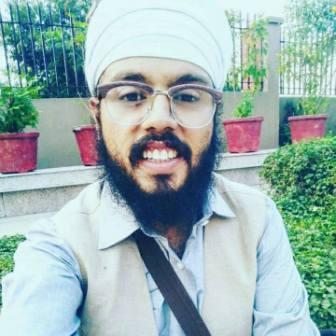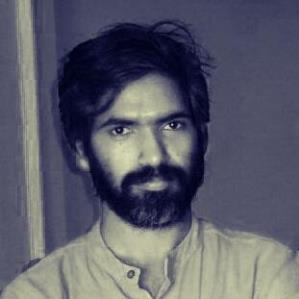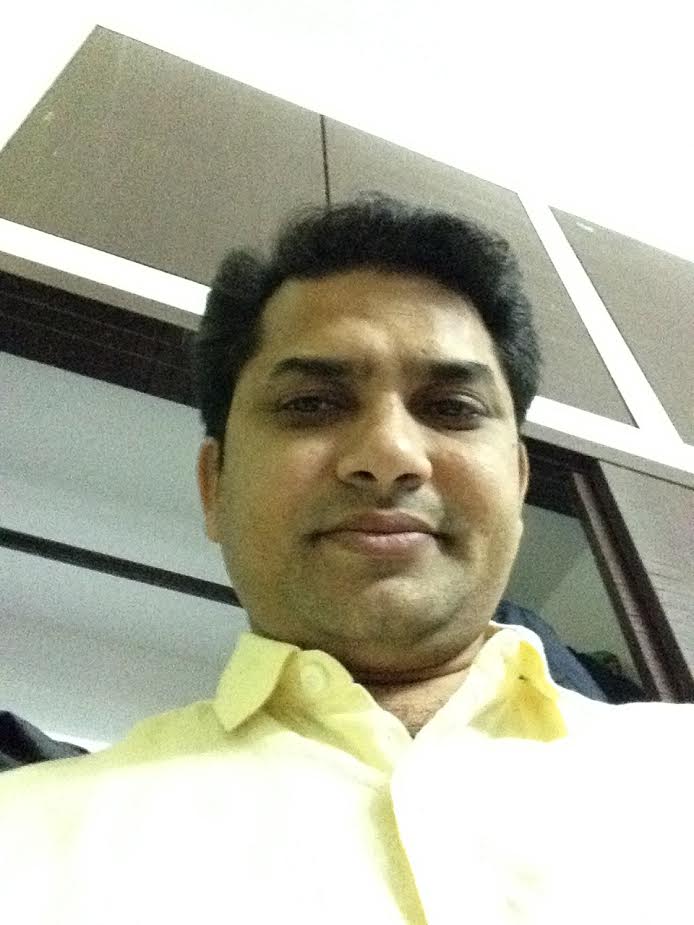Karthick RM
 “If you accept to play the games by the rules set up by those who own or control the board, you will always lose.”
“If you accept to play the games by the rules set up by those who own or control the board, you will always lose.”
– Jean-Paul Sartre
Surprisingly, a writer for Scroll.in in a recent article asked a very pertinent question – “Why doesn’t the violence against Dalits incite liberal fury, as does violence against Muslims?” (Unsurprisingly though, he fails in his analysis.) But it is worth our while to consider this question. So what is it about caste violence that makes it worthy of far lesser attention and outrage than anti-Muslim violence?
One obvious conclusion to arrive at, and which is not without truth in it, is that the lives of lower castes value less. Three main material reasons for this is that the Dalits have never been ruling classes in this country and structural violence against Dalits has been a constant for centuries; two, Dalits do not have the international networks and influence like the Muslims, and atrocities against them will not provoke adverse reactions from external actors; finally, the (forced) invisibility of Dalits in the public sphere makes the liberal mind ignorant and immune to anti-Dalit violence.
But a far more insidious process is happening here, one that is ideological in nature. This is the Hindu-Muslim Love Story. And it is this narrative that we must try to decode if we are to understand why the concern for Muslims does not extend to the lower castes, if we are understand why the anti-Muslim BJP is enemy no 1 for the liberal Hindu, but the CPI(M) which began its rule in Bengal with the massacre of hundreds of Dalits is an ally in the fight against communalism.
Historical Precedents
The historical playground is important. At one end, the Hindutva brigade moans the Islamic invasions and the ‘cruelties’ of the Muslim rule in India. To counter the Right Hindus, it has been pointed out by several Left Hindu historians that the Muslim rule was tolerant to their Hindu subjects and that claims of persecutions were exaggerated. They present several historical records to show the privileges that Hindus enjoyed in Muslim courts. We know that the ‘Islamic bigot’ Aurangzeb’s court had a sizeable representation of upper-caste Hindus. Movies are made eulogizing Akbar’s affairs with Rajput princesses. We can add some more examples. Muslims served in Rana Pratap’s army. Devaraya II built mosques for his Muslim soldiers while Ramaraya allowed his Muslim subjects to kill and consume cows in their quarters. Vavar’s mosque near Ayyappan’s temple in Sabarimalai is worshipped by the Hindus. The Muslim lady Bibi Nanchari’s devotion to Vishnu is celebrated by The Hindu as a ‘tale of eternal love’ – indeed, she is considered at places in South India as a lover and consort of Vishnu.
Liberal scholars will hold up these facts to state the tolerance, pluralism, multiculturalism etc. of India. What is missing in these historical romances is the fact that none of this mutual tolerance and respect translated into a modicum of change for those at the lower ends of the society. None of these religiously liberal rulers even considered something as simple as providing the untouchable castes access to temple entry or a decent education. Whether the Indian postcolonialists like it or not, it was secular colonial modernity that opened up that space. That is another theme to be considered later. But it is precisely the validation of this Hindu-Muslim Love Story that is required to preserve the entity of India, to impose an artificial unity on several nations within the sub-continent, and to put a veil on far deeper structural injustices in the Indian society. Why? Because the Good Hindu realizes that the Muslim is necessary to his being-a-Hindu and is thus genuinely grateful to the Muslim for it.
Another writer on Round Table India, Khalid Anis Ansari, has captured how the Hindu-Muslim narrative in India is set by the Hindu upper castes and their Muslim equivalents, the Ashrafs. He also notes how this works to the detriment of the lower castes and the Pasmandas, the lower sections of the Muslims in India. Let us see how this ideology operates.
Good Hindu/Bad Hindu
Brahminism’s brilliance as an ideology is its creation of false binaries and forcing them on people who have nothing to gain from either side, but are nevertheless ‘compelled’ to take a side. Shankaracharya or Ramanujacharya? Gandhi or Savarkar? Congress or BJP? Teesta Setalvad or Amit Shah? This is a strategy that predates and perfectly complements the postmodern condition of making false free choices in neo-liberal capitalism. “Do you want Pepsi or Coke?” No thanks!
We might assume that the Good Muslim/Bad Muslim is such a binary that has dangerous consequences. But it is the Good Hindu/Bad Hindu binary that is far, far more lethal. The Bad Hindu is a bigot. Often coarse and vulgar, he is easily identified by his unabashed xenophobia. The Bad Hindu is just like any other fundamentalist in any other part of the world, easy to understand, easier to oppose.
The Good Hindu on the other hand is a peculiar phenomena. He reeks of ideology. You can find him quoting any radical text from anywhere in the world, giving support to exotic causes, and leading the fight against imperialism. He has several isms (pluralism, feminism, socialism etc) in his jhola which he will take out and use according to context. But the ism hidden in the pockets of his Fab-India kurta is the cultural logic of Brahminism…
In my stay in JNU, I had met some ultra-leftist Good Hindus who defended Osama bin Laden, Lashkar-e-Taiba and the Taliban for being ‘anti-imperialist’. These same leftists accused Kanshi Ram, Mayawati, and the Dravidian parties of being corrupt and practicing identity politics. But then again, these Good Hindus will also adopt the role of Dalit saviors if the situation requires, accusing the OBCs of being the real oppressors. They will discover Ambedkar and write a preface to him to introduce him to the Western world. They will use corporate platforms to convey communism, while lecturing to Dalits and OBCs about the evils of capitalism.They will question White privilege, but questioning Brahmin privilege will be termed ‘identity politics’. They will note how their party cadres are 90% Dalits, but not how their party leaders and intellectuals are 99% Brahmin… such are the riddles of the Good Hindu!
Fluid, flexible, and highly fashionable unlike his neanderthalic Bad Hindu counterpart, the Good Hindu is the highest point of evolution of Brahminism. And if there is a cause par excellence that he is committed to, it is Islamophilia. And we can take some examples from cinema to consider this point.
Some Islamophilic Cinematic Fantasies
We can consider some movies where the Hindu-Muslim identities are subject to an intense romantic treatment. These are just a few popular samples. Mani Ratnam’s Bombay (1995) is of a Hinduized Tamil male marrying a conservative Muslim girl. In the wake of the Mumbai riots, the love story comes to the foreground and unites Hindus and Muslims as one family, one nation, one India. Karan Johar’s Kurbaan (2009) shows a Hindu woman married to a Muslim terrorist and his My Name is Khan (2010) shows a Hindu woman married to a Muslim who is not a terrorist – both movies promoting the idea of tolerance and the vitality of modern India. The more recent Rajkumar Hirani’s PK (2014) showing a Hindu Indian girl in love with a Pakistani Muslim shows that Indianness can also be reconciled with Pakistaniness. Anything can go: as long as the Hindu upper caste remains at the top, and the Indian physical and ideological structure that preserves this remains intact.
Aparna Sen’s Mr and Mrs Iyer (2002) is instructive here. The Hindu character, Meenakshi Iyer, a conservative Brahmin wife and mother of a child, is exposed to an Islamophobic world of rioting Bad Hindus while travelling with a Muslim acquaintance. As she witnesses the violence, her humanitarian (Good Hindu) side takes over. She helps out her Muslim friend, and gets helped out by him in return, with both developing a strong mutual attraction eventually. We must resist the temptation to be blinded by these ‘human feelings’ overdoses and question the brutal logic that lies beneath. In the movie, Raja, the Muslim character does nothing to change the attitude of Mrs. Iyer towards her caste identity, how the “Iyer” identity by itself discursively implies that there are caste identities inferior to it. Is this not also the character of Muslim Rajas in India, who accommodated the elites, but did nothing for those at the lowest end of the spectrum? At the end of movie, as at the end of the Muslim rule in India, the Brahmin remained a Brahmin, if anything, more revitalized thanks to the Muslim. So, one must not miss the significance of this movie winning the Nargis Dutt Award for Best Feature Film on National Integration. (Incidentally, Nargis Dutt’s story itself is a Hindu-Muslim Love Story.)
We can observe such fantasies playing among the reactions of the Good Hindus to the bogey of Love Jihad that was raised recently by the Bad Hindus. One such Good Hindu woman was very concerned for the safety of her Muslim partner and the prospects for their marriage under Modi rule. She feared, perhaps rightly, that the Modi rule would place restrictions on Hindu women to make their choices. And she ended up defending the Aam Aadmi Party, an outfit no less Brahminical than the BJP. Another such touching story was narrated in The New York Times, of one Ms. Iyer and a Mr. Khan. Their children were praised as “poster girls for a modern and liberal India.” So it is not just the reel, but also the real Mr. and Mrs. Iyer who make a fantastic story!
The Story That Is Not Told
Now, to prevent misinterpretation, the author must add here that he is not conveying a lack of belief in the possibility of love between a Hindu and Muslim. Indeed, love, genuine love, can exist between them as individuals. But when this love becomes a story that articulates certain identities (at the expense of others) and enters the terrain of discourse, it ceases to concern two individuals alone. It becomes political, exposes the politics of the narrators and the subjects, in what they say and what they do not say, and why this is so.
We know for a fact that violence in the forms of killings, attacks, sexual assaults and humiliation heaped on Dalits is a pan-Indian phenomenon, an everyday occurrence, and has been happening even prior to Muslim arrival. If so, why aren’t stories of inter-caste marriages and appeals for dismantling caste bigotries appearing in the public domain with the intensity and zeal as the Hindu-Muslim Love Story? Why couldn’t these individuals be critical towards their Hindu identity and challenge it? It is, as Ambedkar observed, because the Hindu who is obsessed with his own self and the selfish interests of his class is incapable of critical self-introspection. The Dalits and OBCs asserting their humanity will dislodge the superhuman status of the ones at the top. Which is why the romance of the external Other is much preferable to asking crucial questions about the construction of the Self, which stories of the internal Other will bring about. In fact, the romance of the external Other is a screen to prevent such questions being asked about the imagined Hindu Self.
What Position to Take?
Why did Ambedkar and Periyar attack ‘Islamophilic’ Gandhi more than ‘Islamophobic’ Savarkar? The intellectual acumen of Ambedkar and Periyar was such that they realized Bad Hindus like Savarkar and Golwalkar were only a malignant symptom (and one can extend this to the BJP, RSS and VHP too) while it was the Good Hindus like Gandhi then (and in contemporary times we can add CPI(M), Congress and others) who were saving the disease of Hinduism using the love of Muslims as a cover. The former wanted a militant Hinduism, one that would not tolerate other religions. The latter wanted to create an image of a benevolent Hinduism, one that would embrace other religions, while benevolently maintaining its inherent social hierarchy. The Bad Hindu wants only his own particularity to be respected. The Good Hindu, in his tolerance for all religious particularities, also wants his own particularity to be tolerated. Neither are capable of a genuine Universality. To be asked to choose between these two is to be subject to a fraud.
Unfortunately, some non-Brahmin writers too have fallen in the trap laid by the Good Hindus of specifically opposing Hindutva’s opposition to Islam and Muslims. I have sought to show in the article above how Brahminism is a dynamic system that creates elite subjects who BOTH hate and love Muslims. If the bad Hindu uses Dalits and OBCs as mere pawns in the Hindu-Muslim hate games, the Hindu-Muslim Love Story of the good Hindu places them as poor spectators allotted the cheapest seats in a farcical drama. The only radical thing to do is avoid taking sides and to articulate the Periayarite and Ambedkarite position that the construction of the Hindu identity is by itself an oppressive riddle that needs to be dismantled. Ambedkarism and Periyarism have no place in, and no need for, the fantasies of Mr and Mrs Iyer.
~~~
Karthick RM is a PhD student in political theory at the University of Essex, UK.










